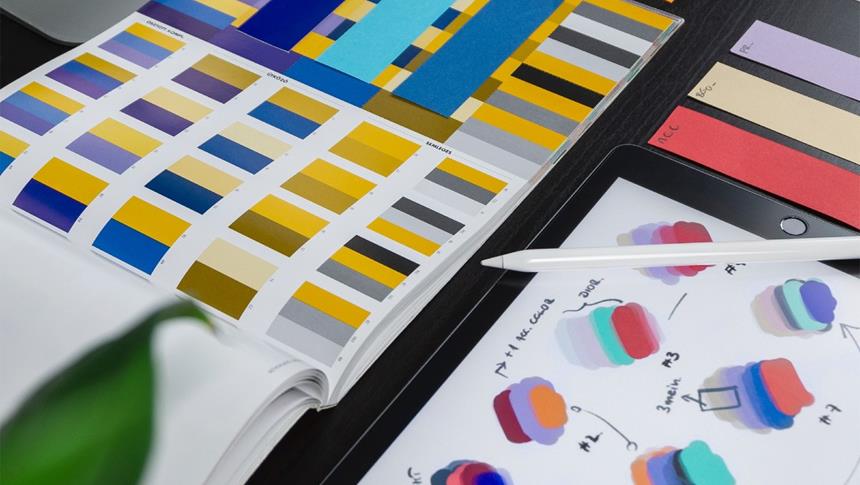If you look around, you can find many examples that illustrate the effect local cultures and social relationships have on designs. From the clothes you wear to the cities you live in, designers across different domains pick inspirations from their cultures.
You can argue that good designs are appreciated across all societal or cultural barriers for their simplicity and aesthetics. Incorporating healthy respect for cultural norms enhances your designs’ value by ensuring they don’t hurt others’ sentiments.
Read ahead to explore how designs in the 21st century are being influenced by rich cultures and societal heritages in different parts of the world.
The usage of colours
The impact of culture on design can perhaps be best explained by talking about the usage of colours in different cultures. For instance, the green colour is really considered auspicious in some Asian and Arabic countries. It would be an excellent base for wedding outfit designs for clients from those regions. However, using the same colour for wedding outfits or decorations in the west might not sit well with your customers.
In a similar example, the white colour might be the right choice for wedding attires for most people in the UK. However, it might be offensive to some Indian families as white is predominantly associated with mourning in most Indian cultures.
These instances can help you appreciate the massive impact cultural or societal contexts can have on design. Staying aware and being sensitive towards others’ cultural differences can help you bring a greater level of maturity and inclusiveness in your designs.
Cultural differences and design innovations
Social and cultural differences around the globe can often inspire new design trends and innovations in the industry. Most of these trends stem from a lack of inclusivity in existing designs. Your designs would are more likely to be a success if you can accommodate the maximum number of people, irrespective of their gender, race or age.
Take the example of the newest medicinal plasters, BandAids, from Johnson and Johnson. The company made their bandages more inclusive by releasing them in different shades of skin tones along with existing colours of white and beige.
This design trend has helped the company thrive in recent times, especially with the global focus on the Black Lives Matter movement.
Another excellent example of design innovation as a result of cultural context is the Burkini. Designed by Aheda Zanetti, the modest version of a ‘bikini’ came to life when she discovered a lack of sportswear for Muslim girls that would respect their culture. The simple consideration of cultural belief in her design made her product viral.
Design innovations as a result of geography and demographics
Designs aren’t always influenced by cultural differences. Geographical locations and population demographics are huge contributors too.
For example, houses are typically constructed out of wood in Northern Canada to provide insulation against the frigid temperatures. However, most parts of the UK have concrete homes as it doesn’t get that cold.
Tips on making your designs culture inclusive
Now that you know the extent of the impact cultural differences has on the design industry, you need a comprehensive way to reflect them in your designs.
You can start by doing extensive research into the culture and societal norms surrounding your geographical location or the clients’ demands. If you aren’t sure where to begin, you can ask your clients directly but politely. By incorporating elements from their cultures in your product, you can achieve a good customer satisfaction record.
Start your design journey by pursuing an illustration or a fashion design degree with a relevant module on cultural context appreciation.
Want to learn how to customise your designs as per local culture or social conditions? The BA (Hons) Graphic Design Course from the London College of Contemporary Arts (LCCA) can help you do just that.
This graphic design degree has a relevant course module called “Social and Cultural Contexts,” which can help you develop an appreciation for cultural ethics and values. The module can also help you learn how to incorporate local cultures and create appropriate graphic visuals for your clients.
The UCA-awarded course can allow you to pursue exciting career profiles in the design industry, such as graphic designer, art director or illustrator. The course also has an option for a foundation year in Art and Design if you haven’t met the programme’s entry criteria.
You can check out the programme details in-depth on the LCCA website.


 The Power of Mapping Geography versus Typography
The Power of Mapping Geography versus Typography  How to animate a still photo using Adobe Photoshop
How to animate a still photo using Adobe Photoshop  5 Web-based design tools you can use to explore your creativity!
5 Web-based design tools you can use to explore your creativity!  Tell Your Story Visually: How to Develop Your Graphic Design Skills
Tell Your Story Visually: How to Develop Your Graphic Design Skills  Does studying from home impact your creativity?
Does studying from home impact your creativity?